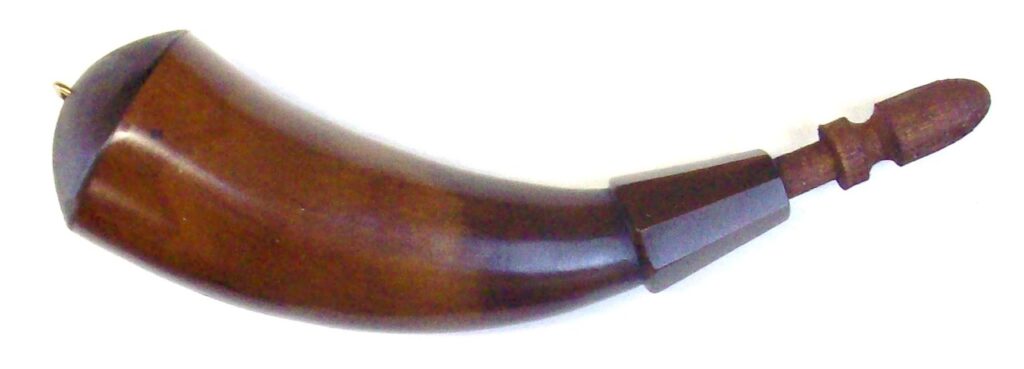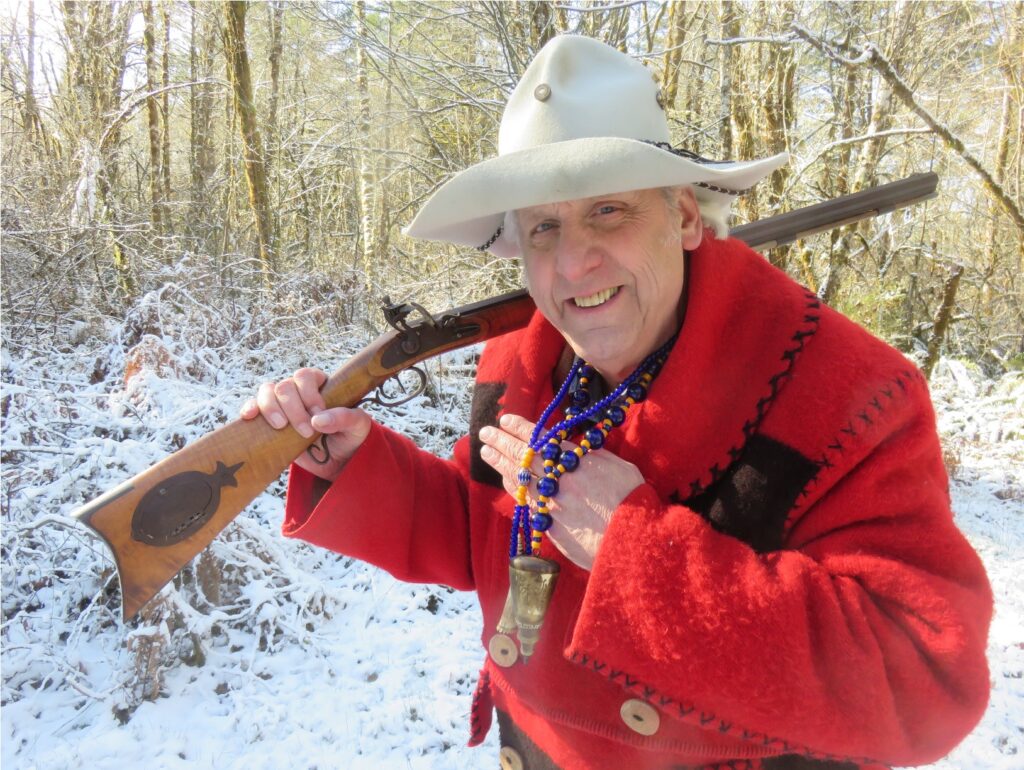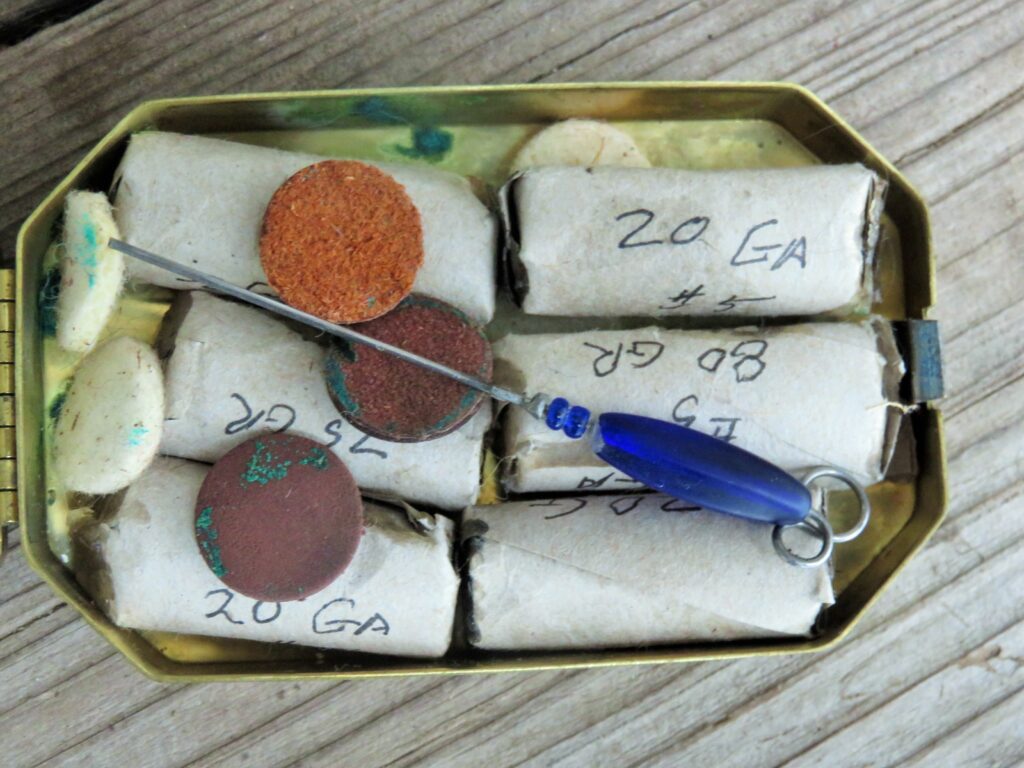
By Mike Nesbitt | Contributing Editor
While hunting with a muzzleloading rifle, we certainly need to carry some “ammo” with us just in case more than one shot is needed.
For such doin’s I don’t care to be saddled with a pouch and powder horn but at least some of the things generally carried in a shooting pouch must be taken along, anytime you leave the camp. Here’s a short review of what I like to carry with me on a muzzleloading hunt and how I like to carry such plunder.

How to carry the powder comes to mind first. That powder must be kept dry in all kinds of weather. Some of the hunters like to carry a small powder horn with them when they make those short trips out of camp. Those smaller powder horns are often referred to as “day horns” which, if they are used at all, can be re-filled from a larger powder horn after returning from a scouting trip or a hunt where shots have been fired. That’s not a bad idea at all and using a day horn certainly takes a bit of the load off of your back which can make for a more comfortable trip away from camp.
I have a small horn that gets used as a day horn quite often, especially when I’m out of camp and carrying a trade gun. That’s a small flat horn. Rather than wearing this horn with a strap, I simply put the horn in the pocket of my mackinaw jacket along with some other fixin’s and away I go.
Another small powder horn that I’ve used quite a bit is one of the “cap horns” that used to be made by Earl Cureton. Those cap horns do well for a small supply of gun powder to be carried in your coat pocket. How much they can hold will depend, just like with a larger powder horn, on how big it actually is. But the size really doesn’t matter because these little horns will hold enough to give you a couple of added shots and that’s all you really want.
October Country makes two small horns that are very similar. They make their Frontier Priming Horn which is on the fancy side and a plainer Poor Boy Trade Priming Horn. Either one will work like a champion. Both of these small horns come with attachments for straps, so you could use them with a strap if desired. For my own tastes, these horns would just be dropped into a pocket on the old mackinaw and they’re both small enough to hide in the pocket rather well.
Along with the small powder horn, a powder measure is needed and I prefer a fixed measure, most often made out of deer antler, for quickly measuring the charge of powder before dumping the powder down the gun’s barrel. A good empty .45/70 case makes an excellent powder measure, holding 70 grains of loose powder, which is a convenient thing to have and use.
For carrying a powder measure to use while on the trail, I prefer a non-adjustable measure worn on a “tether” around my neck. That helps to keep the amount of plunder stashed in my pockets to a bit of a minimum and it’s always easy to find.

Of course, using pre-measured powder charges can be considered quicker to use and I often carry about five pre-measured doses of powder with me, still in my coat pockets. With the popularity of hunting with modern muzzle-loading in-lines today, containers for holding pre-measured powder charges are rather easy to find. Frankly, I have no favorites among those accessories so I can’t give any recommendations, although I have used pre-measured powder charges with great success.
While hunting with either one of my .54 caliber rifles or my flintlock .58-caliber Hawken, I carry pre-measured powder charges of 120 grains of GOEX FFg in empty 35-mm film containers. The number powder charges I’d carry would simply equal the number of patched bullets I’d have with me, usually five for the .54 but perhaps just three for the .58. That number was simply equal to the number of holes in my loading blocks for those two calibers. With the powder in the film containers, just pop the top and pour…
Yes, that was back in the old days when I used and carried a film camera…
For my round ball rifles, I carry pre-patched balls in a loading block, often on a line worn around my neck so the loading block is also inside my jacket. Being inside the jacket keeps the lube from freezing in cold weather and that certainly helps in getting the ball out of the loading block and down the barrel to rest on top of the powder charge. With some rifles a short starter is not necessary, just use the rifle’s ramrod. And if a short starter is needed, because those do make loading easier, one can also be carried in the coat pocket.
With my rifles I generally carry a loading block which carries a small number of already patched round balls. For the .58 my loading block just carries three patch balls, and I like the .565” diameter balls wrapped in .020” lubricated patches. Three are plenty, at least they have been so far. I’ve never gotten back to camp with more than two of those balls being used. For the .54s I carry a loading block that holds five patched balls and, again, that amount seems to be more than enough.
Another way of carrying projectiles becomes a bit of a “must” when we consider carrying shot loads for our trade guns or shotguns. While on the short trail for grouse, I like carrying a fowler loaded with just over an ounce of #5 shot. Just in case the need to reload should arise, I carry a Tedd Cash tobacco box that holds 6 pre-wrapped shot charges plus the wads and card needed inside the gun’s barrel. That tobacco box also holds a flash-hole pick because that’s a small tool which can get to be very worthwhile on a small game hunt, especially in damp weather. The tobacco box filled with these few items will usually keep me happy while being away from camp during the day.

The pre-wrapped shot charges must be undersized for the bore for ease of loading and also because those paper wrappings must bust open inside the gun’s barrel while the shot is being accelerated toward the muzzle. If those wrappings don’t tear or bust open before the shot leaves the muzzle, there are no other forces that will open the wrappings and the wrapped shot charge will simply fly on its way still in the paper wrapping. The wrapping will probably burst open on impact with the target but that is a little too late. We might call that an extremely tight pattern but it isn’t what we really need for small game.
We’ve talked about powder and projectiles, now for just a few comments on priming. With either a flintlock or a percussion gun, I’ll carry my priming horn or caps on strings around my neck. That usually keeps my priming powder or caps under my coat keeping them warm and, more importantly, dry. Priming powder is carried in a small flat horn and if I’m packing a percussion, the caps are carried in one of the famous Cash Rifle Cappers made by Cash Manufacturing. The Cash Rifle Capper will hold about 75 of the #11 percussion caps and I’ve never counted how many times I can prime a flintlock with the amount of powder carried in my priming horn. In either case, I’ve got more than enough priming to go along with the bullets and powder charges a day on the trail.



